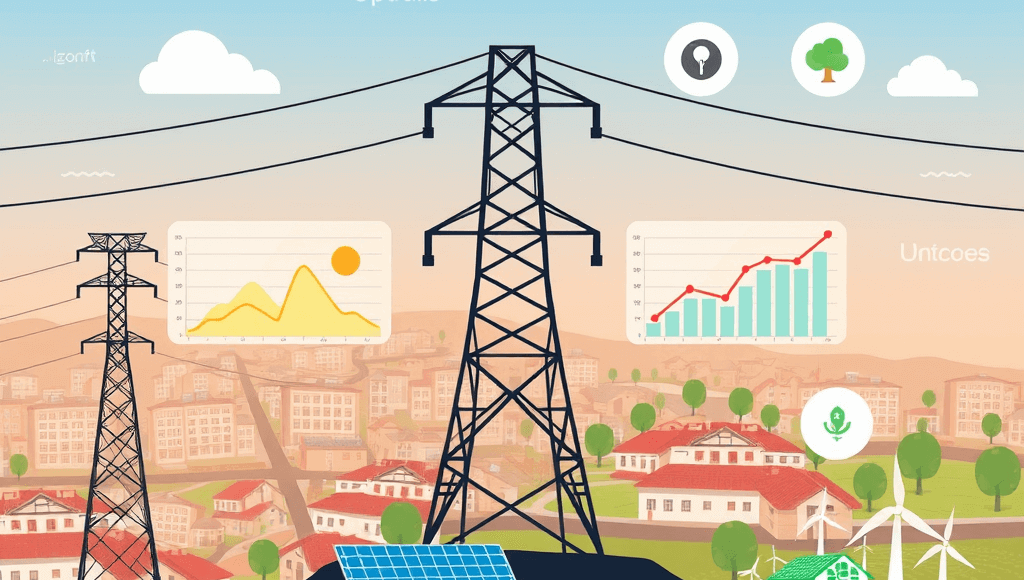An Optimal Strategy to Determine the Electricity Tariff During Different Operational Conditions
برای مشاهده مقاله بر روی لینک زیر کلیک کنید:
“An Optimal Strategy to Determine the Electricity Tariff During Different Operational Conditions“
:Abstract of the article
Apart from the objective of optimizing electricity bills by enhancing consumption patterns, the implementation of dynamic pricing for electric energy can facilitate the redistribution of demand from peak hours to non-peak hours. This strategic approach aims to effectively manage congestion issues and enhance the overall stability of the system. Therefore, it becomes crucial to determine tariff rate modifications by taking into account the demand side’s elasticity and devising a strategy that maximizes the profitability for all stakeholders. In this study, two distinct time-of-use (ToU) tariffs, specifically a two-level and three-level structure, are utilized alongside the modeling of consumers’ elastic behavior. The primary goal is to design an optimal tariff rate scheme that simultaneously maximizes the company’s profits and minimizes the consumers’ electric energy bills. To accomplish this, a genetic algorithm is employed to derive the most favorable tariff structure. The evaluation of the proposed strategy is con-ducted on the 24-bus IEEE system. To capture the diversity in consumers’ consumption patterns, all loads are categorized into five distinct groups, with three categories representing residential loads and two categories representing industrial loads. The results obtained from the analysis demonstrate that by implementing an appropriate three-level ToU tariff and considering operational constraints, a substantial shift of more than 4.7% for residential loads and over 5% for industrial loads during peak hours can be achieved, redirecting them towards off-peak hours
چکیده مقاله:
علاوه بر هدف بهینهسازی قبوض برق از طریق بهبود الگوهای مصرف، اجرای قیمتگذاری پویا برای انرژی الکتریکی میتواند به تسهیل توزیع مجدد تقاضا از ساعات پیک به ساعات غیر پیک کمک نماید. این رویکرد راهبردی در پی مدیریت مؤثر مسائل مربوط به ازدحام و بهبود پایداری کلی سیستم است. از این رو، تعیین تعدیلات نرخ تعرفه با در نظر گرفتن کشش طرف تقاضا و تدوین راهبردی که سودآوری را برای کلیه ذینفعان به حداکثر برساند، حائز اهمیت است.
در این مطالعه، دو تعرفه زمان مصرف (ToU) متمایز، به ویژه ساختار دو سطحی و سه سطحی، در کنار مدلسازی رفتار کشسان مصرفکنندگان به کار گرفته شده است. هدف اصلی، طراحی یک طرح نرخ تعرفه بهینه است که به طور همزمان سود شرکت را به حداکثر رسانده و قبوض انرژی الکتریکی مصرفکنندگان را به حداقل برساند. برای دستیابی به این مهم، از یک الگوریتم ژنتیک برای استخراج مطلوبترین ساختار تعرفه استفاده شده است. ارزیابی راهبرد پیشنهادی بر روی سیستم IEEE ۲۴ باسه انجام شده است. به منظور ثبت تنوع در الگوهای مصرف مصرفکنندگان، کلیه بارها به پنج گروه متمایز تقسیم شدهاند، به طوری که سه دسته نماینده بارهای مسکونی و دو دسته نماینده بارهای صنعتی هستند. نتایج حاصل از تحلیل نشان میدهد که با اجرای یک تعرفه ToU سه سطحی مناسب و در نظر گرفتن محدودیتهای عملیاتی، میتوان جابجایی قابل توجهی بیش از ۴.۷ درصد برای بارهای مسکونی و بیش از ۵ درصد برای بارهای صنعتی در ساعات پیک را محقق ساخت و آنها را به ساعات غیر پیک منتقل نمود.

